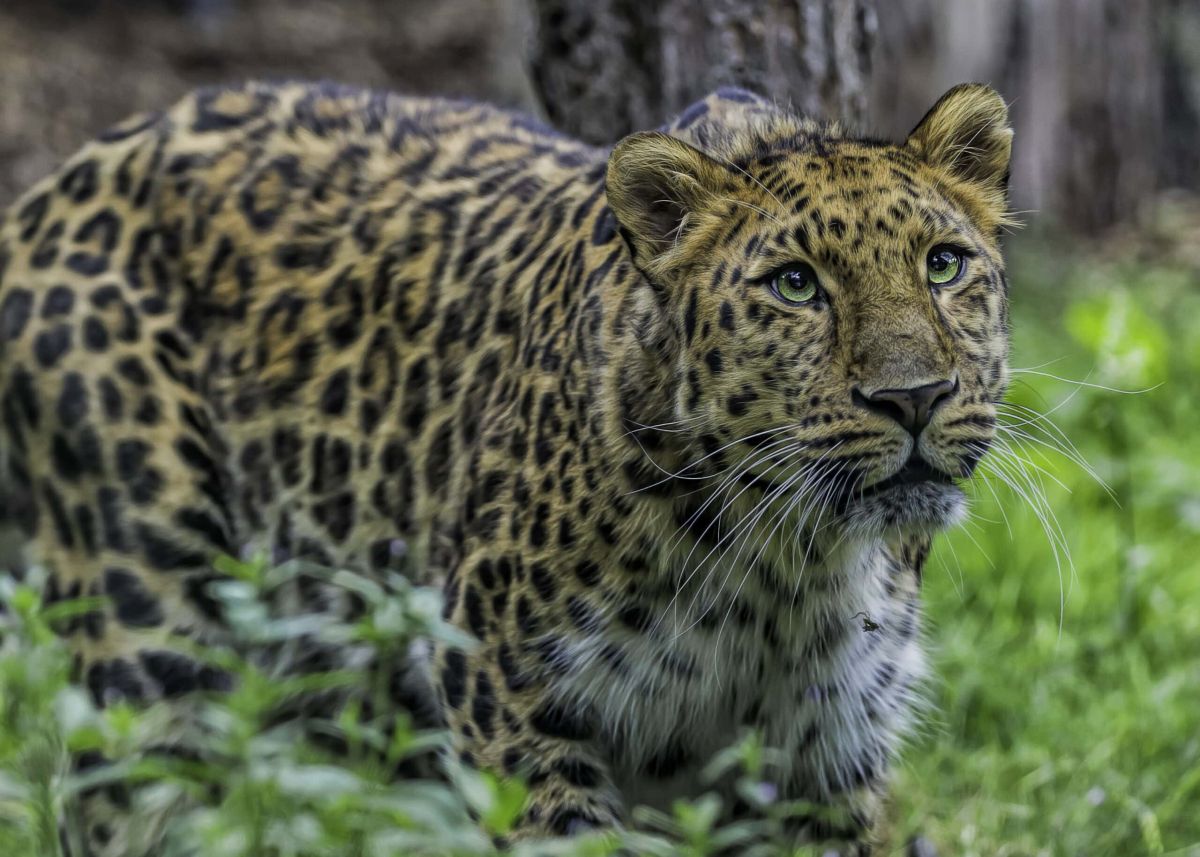The Amur Leopard: A Rare Jewel

The Amur leopard (Panthera pardus orientalis), often regarded as one of the world’s rarest big cats, is a hauntingly beautiful creature that inhabits the temperate forests of the Russian Far East and northeastern China. With its striking coat and elusive nature, the Amur leopard inspires both awe and concern in conservationists working to protect its dwindling population.
Physical Characteristics
The Amur leopard is renowned for its distinctive appearance. With a thick, beautiful coat that is cream-colored with dark rosettes, this leopard has adapted to its cold habitat with longer fur compared to other leopard subspecies. Adult males typically weigh between 80 to 200 pounds and measure around 4.25 to 5.5 feet in body length, while females are slightly smaller. Their long legs and muscular build make them excellent climbers and adept hunters, capable of leaping great distances to catch prey.
Habitat and Range
Once ranging across a larger territory in Manchuria, Korea, and the Russian Far East, the current range of the Amur leopard has dramatically shrunk due to habitat loss and human interference. Today’s population is mainly confined to the temperate forests of the Russian Land of the Leopard National Park and small pockets in China’s Jilin Province. This habitat is characterized by mixed forests rich in biodiversity, ideal for supporting various prey species.
Diet and Behavior
The Amur leopard is a solitary hunter, primarily active during dusk and dawn. It preys on animals such as roe deer, sika deer, hares, and smaller mammals. Their hunting skills are impressive; they can stalk their prey silently and launch bursts of speed to catch them unawares. Despite their solitary nature, Amur leopards do communicate with each other through vocalizations and scent marking, particularly during mating season.
Threats to Survival
The future of the Amur leopard is precarious, with the International Union for Conservation of Nature (IUCN) listing it as “Critically Endangered.” Its dwindling numbers, estimated at around 100 individuals in the wild, face multiple threats:
- Habitat Loss: Deforestation and land-use changes in their habitat due to agriculture, logging, and urbanization have severely impacted the Amur leopard’s living space.
- Poaching: Illegal hunting remains a significant threat, not only to leopards but also to their prey. The demand for leopard skins and traditional medicines contributes to the decline of this species.
- Prey Depletion: As human activities encroach on their territory, the populations of prey species are declining. This decreases food availability for the leopards, complicating their survival.
- Climate Change: Climate change poses long-term risks to the leopard’s habitat, potentially altering the ecosystems on which they depend.
Conservation Efforts
In response to the critical status of the Amur leopard, numerous efforts are underway to protect this magnificent creature.
- Protected Areas: The establishment of the Land of the Leopard National Park in Russia has been a significant step toward creating a safe habitat for Amur leopards. This park is one of the largest protected areas in Russia and serves as a sanctuary for both leopards and their prey.
- Anti-Poaching Initiatives: Organizations working in the region are implementing stricter anti-poaching measures, employing rangers, and using technology such as camera traps and drones to monitor wildlife populations.
- Education and Community Engagement: Engaging local communities in conservation efforts is vital. Education programs aimed at reducing human-wildlife conflict and promoting coexistence have been introduced, helping people appreciate the ecological role of these big cats.
- International Cooperation: Conservation groups and governments are collaborating across borders to ensure a cohesive approach to safeguarding the Amur leopard. Tracking and monitoring movements, genetic studies, and habitat restoration projects are crucial components of these collaborative efforts.
Conclusion
The Amur leopard stands at the crossroads of conservation and extinction, embodying the fragility of nature in a rapidly changing world. Protecting this spectacular subspecies requires a concerted effort from local governments, conservation organizations, and the global community. By raising awareness, fostering coexistence, and implementing effective conservation strategies, we can work together to ensure that the Amur leopard does not vanish from our planet, preserving not just a species but the rich biodiversity of the ecosystems they inhabit.



